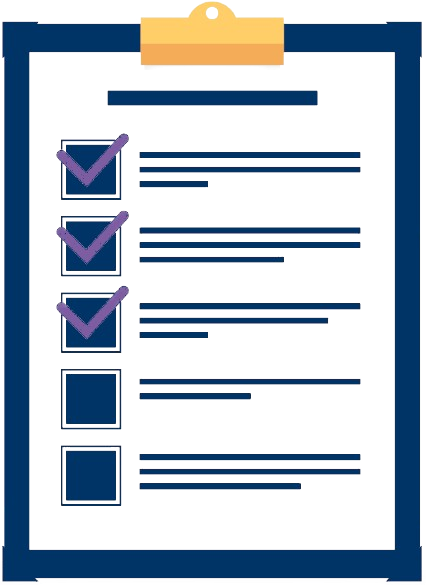Suggestions based on the Question and Answer that you are currently viewing
1.15 Cost reduction; value chain analysis Budget Cupboards produces kitchen and bathroom cupboards that incorporate unusual functions, such as specialty drawers for knives and kitchen tools, and kitchen appliance holders that pop up from under the counter top. Competition in this industry has recently increased. Budget’s management wants to cut costs for its basic cupboard models and then cut prices using the structure of the table as shown. Required (a) The following table lists potential areas for cost reduction. Two potential cost reductions are provided for the first area listed (design phase). For each of the remaining areas, identify two potential ways that Budget Cupboard’s management could reduce costs. (b) Budget does not currently use value chain analysis. Describe several advantages of using value chain analysis.
Explain agency theory and how it relates to reward systems.
Static and flexible budgets Plush pet toys are produced in a largely automated factory in standard lots of 100 toys each. A standard cost system is used to control costs and to assign cost to inventory. Variable overhead, estimated at $5 per lot, consists of miscellaneous items such as thread, a variety of plastic squeakers, and paints that are applied to create features such as eyes and whiskers. Fixed overhead, estimated at $24 000 per month, consists largely of depreciation on the automated machinery and rent for the building. Variable overhead is allocated based on lots produced. The standard fixed overhead allocation rate is based on the estimated output of 1000 lots per month. Required (a) Prepare a production budget for the coming year based on planned production 12 000 lots. (b) Compare the budget prepared in (a) with a flexible budget based on actual activity of 15 000 lots.
What should be the pattern of amortization for a limitedlife intangible?
Businesses valued at less than $50 million or so rarely go public. Explain the limitations to such businesses if they did go public. (LO3)
Suppose the percent completion of ending WIP is overestimated at the end of year 1. How does this measurement error affect the process costing results in year 1 and year 2?
What book-tax differences in year 1 and year 2 associated with its capital gains and losses would ABD Inc. report in the following alternative scenarios? Identify each book-tax difference as favorable or unfavorable and as permanent or temporary.
What are some of the resource changes that can be made to increase plant capacity in the short run?
On January 1, 2014, Bonanza Wholesalers Inc. adopted the dollar-value LIFO inventory method for income tax and external financial reporting purposes. However, Bonanza continued to use the FIFO inventory method for internal accounting and management purposes. In applying the LIFO method, Bonanza uses internal conversion price indexes and the multiple pools approach under which substantially identical inventory items are grouped into LIFO inventory pools. The following data were available for inventory pool no. 1, which comprises products A and B, for the 2 years following the adoption of LIFO. FIFO Basis per Records Unit Total Units Cost Cost Inventory, 1/1/14 Product A 10,000 $30 $300,000 Product B 9,000 25 225,000 $525,000 Inventory, 12/31/14 Product A 17,000 36 $612,000 Product B 9,000 26 234,000 $846,000 Inventory, 12/31/15 Product A 13,000 40 $520,000 Product B 10,000 32 320,000 $840,000 Instructions (a) Prepare a schedule to compute the internal conversion price indexes for 2014 and 2015. Round indexes to two decimal places. (b) Prepare a schedule to compute the inventory amounts at December 31, 2014 and 2015, using the dollar-value LIFO inventory method.
Lanny and Shirley are recently divorced and do not live together. Shirley has custody of their child, Art, and Lanny pays Shirley $22,000 per year. All property was divided equally. a. How much should Shirley include in income if Lanny’s payments are made in cash but will cease if Shirley dies or remarries? b. How much should Shirley include in income if $12,000 of Lanny’s payments is designated as “nonalimony” in the divorce decree? c. How much should Shirley include in income if Lanny’s payments drop to $15,000 once Art reaches the age of 18?
Explain how changes in foreign currency values can affect the performance of international mutual funds. (LO2)
In what ways is a monopolistically competitive firm likely to be less efficient than one under perfect competition?
Nancy Tercek, the financial vice president, and Margaret Lilly, the controller, of Romine Manufacturing Company are reviewing the financial ratios of the company for the years 2014 and 2015. The financial vice president notes that the profit margin on sales ratio has increased from 6% to 12%, a hefty gain for the 2-year period. Tercek is in the process of issuing a media release that emphasizes the efficiency of Romine Manufacturing in controlling cost. Margaret Lilly knows that the difference in ratios is due primarily to an earlier company decision to reduce the estimates of warranty and bad debt expense for 2015. The controller, not sure of her supervisor’s motives, hesitates to suggest to Tercek that the company’s improvement is unrelated to efficiency in controlling cost. To complicate matters, the media release is scheduled in a few days. Instructions (a) What, if any, is the ethical dilemma in this situation? (b) Should Lilly, the controller, remain silent? Give reasons. (c) What stakeholders might be affected by Tercek’s media release? (d) Give your opinion on the following statement and cite reasons: “Because Tercek, the vice president, is most directly responsible for the media release, Lilly has no real responsibility in this matter.”
What are two other names for ram type EDMs?
For various reasons a corporation may issue warrants to purchase shares of its common stock at specified prices that, depending on the circumstances, may be less than, equal to, or greater than the current market price. For example, warrants may be issued: 1. To existing stockholders on a pro rata basis. 2. To certain key employees under an incentive stock-option plan. 3. To purchasers of the corporation’s bonds. Instructions For each of the three examples of how stock warrants are used: (a) Explain why they are used. (b) Discuss the significance of the price (or prices) at which the warrants are issued (or granted) in relation to (1) the current market price of the company’s stock, and (2) the length of time over which they can be exercised. (c) Describe the information that should be disclosed in financial statements, or notes thereto, that are prepared when stock warrants are outstanding in the hands of the three groups listed above.
What limitations apply to the amount of the allowable dividends-received deduction?
Explain how circuit breakers are used to reduce the likelihood of a large stock market crash. (LO4)
Does the kiddie tax eliminate the tax benefits gained by a family when parents transfer income-producing assets to children? Explain.
Is it in the interest only of workers (i.e. and not employers) to resist falls in real wage rates?
Harris Corp. is a technology start-up and is in its second year of operations. The company didn’t purchase any assets this year but purchased the following assets in 2023:
What are the carryover and carryback periods for a net operating loss? Does a corporation have the option to choose the years to which it carries back a NOL? Explain.
How do banks resolve illiquidity problems? (LO2)
A cylindrical workpart with D = 2.5 in and h = 2.5 in is upset forged in an open die to a height = 1.5 in. Coefficient of friction at the die-work interface = 0.10. The work material has a flow curve defined by: K = 40,000 lb/in2 and n = 0.15. Yield strength = 15,750 lb/in2. Determine the instantaneous force in the operation (a) just as the yield point is reached (yield at strain = 0.002), (b) at height h = 2.3 in, (c) h = 2.1 in, (d) h = 1.9 in, (e) h = 1.7 in, and (f) h = 1.5 in. Use of a spreadsheet calculator is recommended.
Have unemployment rates generally risen or fallen over the decades or is there no discernible pattern? Does the answer vary by country?
King Donovan Resources Group has been in its plant facility for 15 years. Although the plant is quite functional, numerous repair costs are incurred to maintain it in sound working order. The company’s plant asset book value is currently $800,000, as indicated below. Original cost $1,200,000 Accumulated depreciation 400,000 Book value $ 800,000 During the current year, the following expenditures were made to the plant facility. (a) Because of increased demands for its product, the company increased its plant capacity by building a new addition at a cost of $270,000. (b) The entire plant was repainted at a cost of $23,000. (c) The roof was an asbestos cement slate. For safety purposes, it was removed and replaced with a wood shingle roof at a cost of $61,000. Book value of the old roof was $41,000. (d) The electrical system was completely updated at a cost of $22,000. The cost of the old electrical system was not known. It is estimated that the useful life of the building will not change as a result of this updating. (e) A series of major repairs were made at a cost of $47,000, because parts of the wood structure were rotting. The cost of the old wood structure was not known. These extensive repairs are estimated to increase the useful life of the building. Instructions Indicate how each of these transactions would be recorded in the accounting records.
The benefits of buying with AnswerDone:

Access to High-Quality Documents
Our platform features a wide range of meticulously curated documents, from solved assignments and research papers to detailed study guides. Each document is reviewed to ensure it meets our high standards, giving you access to reliable and high-quality resources.

Easy and Secure Transactions
We prioritize your security. Our platform uses advanced encryption technology to protect your personal and financial information. Buying with AnswerDone means you can make transactions with confidence, knowing that your data is secure

Instant Access
Once you make a purchase, you’ll have immediate access to your documents. No waiting periods or delays—just instant delivery of the resources you need to succeed.
